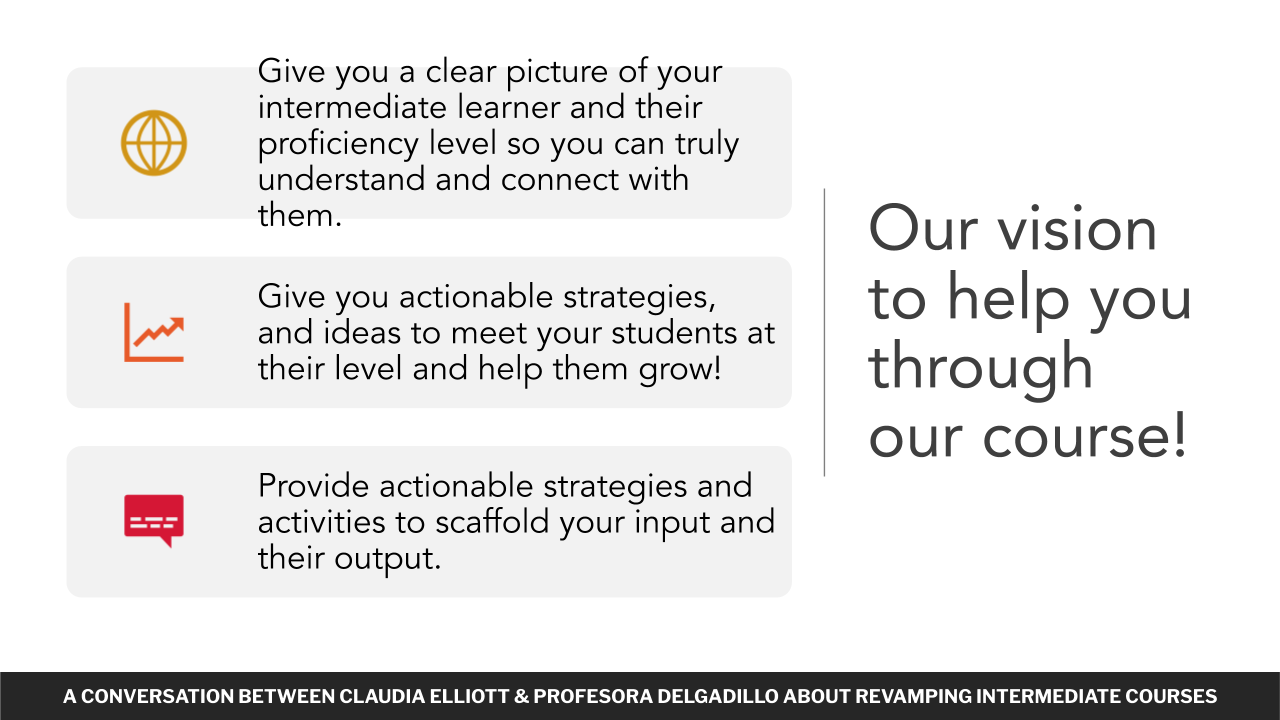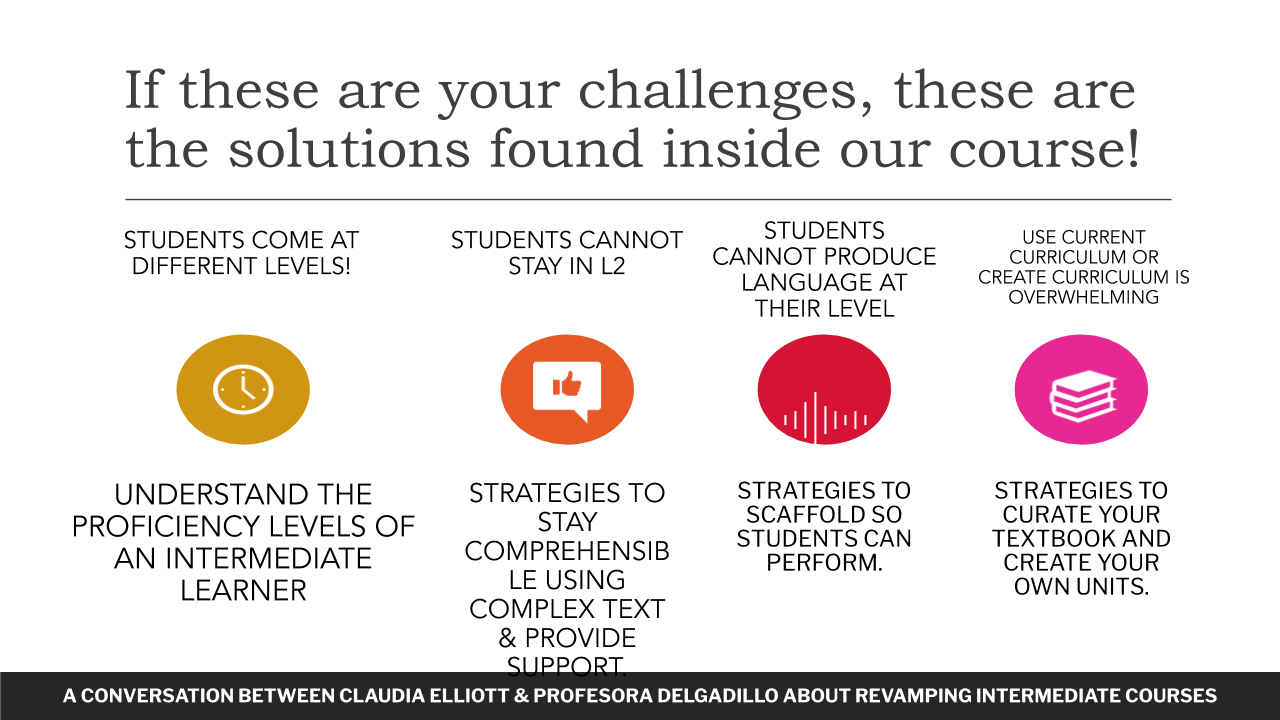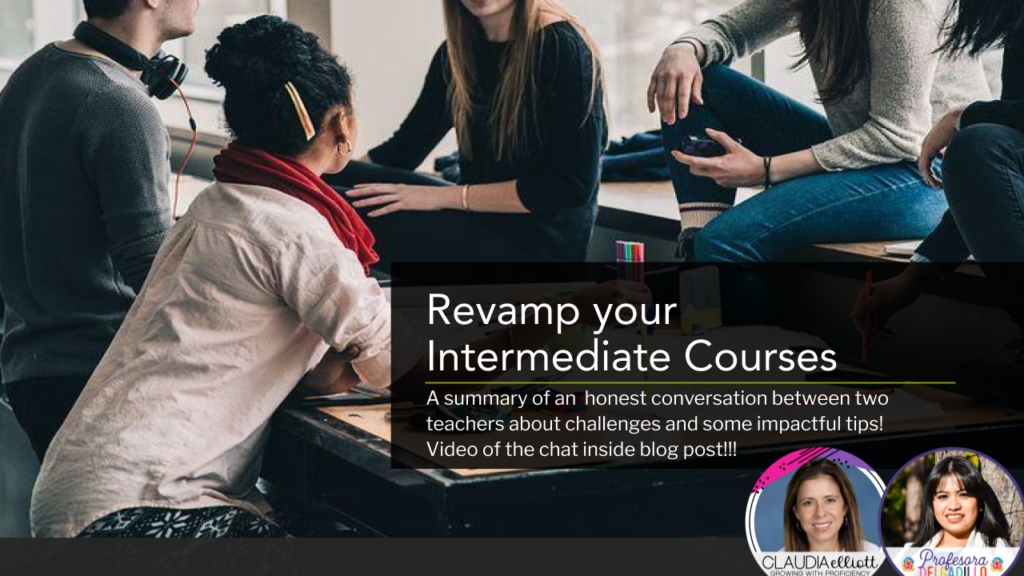All world language courses bring their own set of challenges. In Spanish I, our students may bring no prior experience. That can be a pro or a con depending on how we look at it. As students advance to levels 2 and 3, the mixed levels of performance may become more obvious and sadly the gap may become wider if we aren’t proactive. I have been teaching levels 2, 3, and AP Spanish for four years exactly, and I know that when I first started, I did not do such a great job. I wish I could contact all of my students from those first experiences and apologize to them for my low teaching performance.
Flash forward to now, these intermediate classes are by far the classes I look forward to teaching the most. I enjoy the conversations that I can have with my students on themes that matter to both of us. My students and I genuinely enjoy our learning experiences because I learn as much as they do in the process. I absolutely love it when they leave my classroom feeling in charge of their language learning journey. After graduation, I have had students who left my classes intermediate mid and came back to visit with a much higher proficiency level because they had a commitment to learning the language beyond the classroom and they knew exactly what to do to get to the next level. So, what changed? I overcame some challenges found inside intermediate courses, and I recently had a conversation with my friend Claudia Elliott about how she overcame these same challenges as well.
Today, you can read a short version about what we changed on this blog post, or you can check out the full version by watching the recording of our Facebook Live from this Saturday, May 30th, 2020.
CHALLENGE #1 – STUDENTS WALK INTO INTERMEDIATE CLASSES WITH DIFFERENT LEVELS OF PROFICIENCY
HOW WE OVERCAME THIS CHALLENGE
- We accepted the reality that all students come to intermediate courses with different levels of proficiency; therefore, their performance outcomes will be different.
- We stopped blaming their low performance on their abilities or on their previous teachers regardless of whether that had anything to do with it or not and we taught ALL students. This was more of a mind shift.
- We also reminded ourselves that if equity really mattered inside our world language classes, we needed to prove so with our actions and attitudes, so discouraging students with lower proficiency levels from staying inside our courses was not acceptable.
- We studied ACTFL’s proficiency guidelines and allowed those to guide our teaching instead of the textbook. Eventually, I stopped using the textbook altogether, but I am not saying that YOU have to do that as well.
MAJOR TIP: Start the year at the proficiency level that is inclusive of all of your students’ abilities. You are probably thinking “easier said than done,” which leads me to the next challenge.
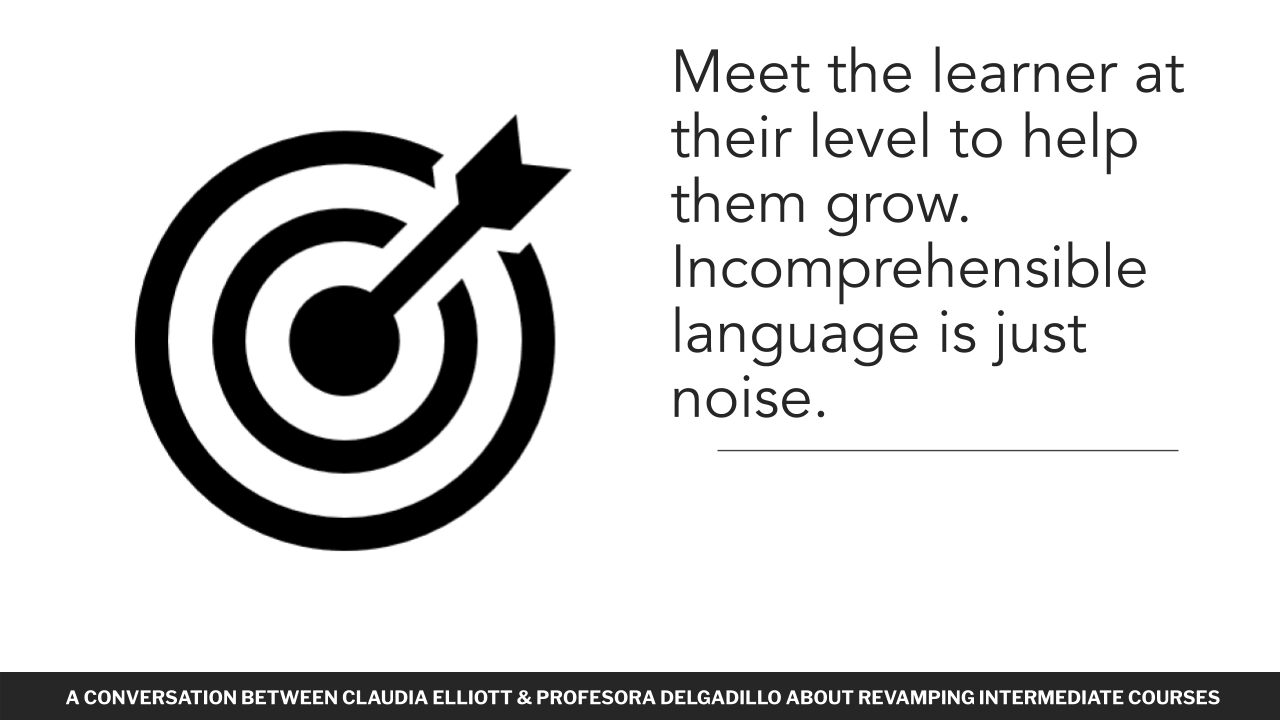
CHALLENGE #2 – STUDENTS WON’T STAY IN THE TARGET LANGUAGE
While this challenge may not be unique to intermediate classes, it becomes more evident at this level.
HOW I OVERCAME THIS CHALLENGE –
- We researched different ways to scaffold all tasks, but most importantly, output tasks.
- We acknowledged that all students want to feel successful and they want to output in the target language, so why not help those who can’t quite do it 100% independently just yet.
- We want to set high standards for all students AT THEIR LEVEL, but these also must be reasonable standards. We cannot demand a novice high student to perform at intermediate high simply because they are in a class where that is the goal.
How can we scaffold for success?
MAJOR TIP: We can provide sentence starters, support the content we are delivering with anchor charts, and write and discuss a la Mike Peto to establish a model of the writing process. These are just a few examples, but there are tons of other ways we can scaffold tasks for our students.
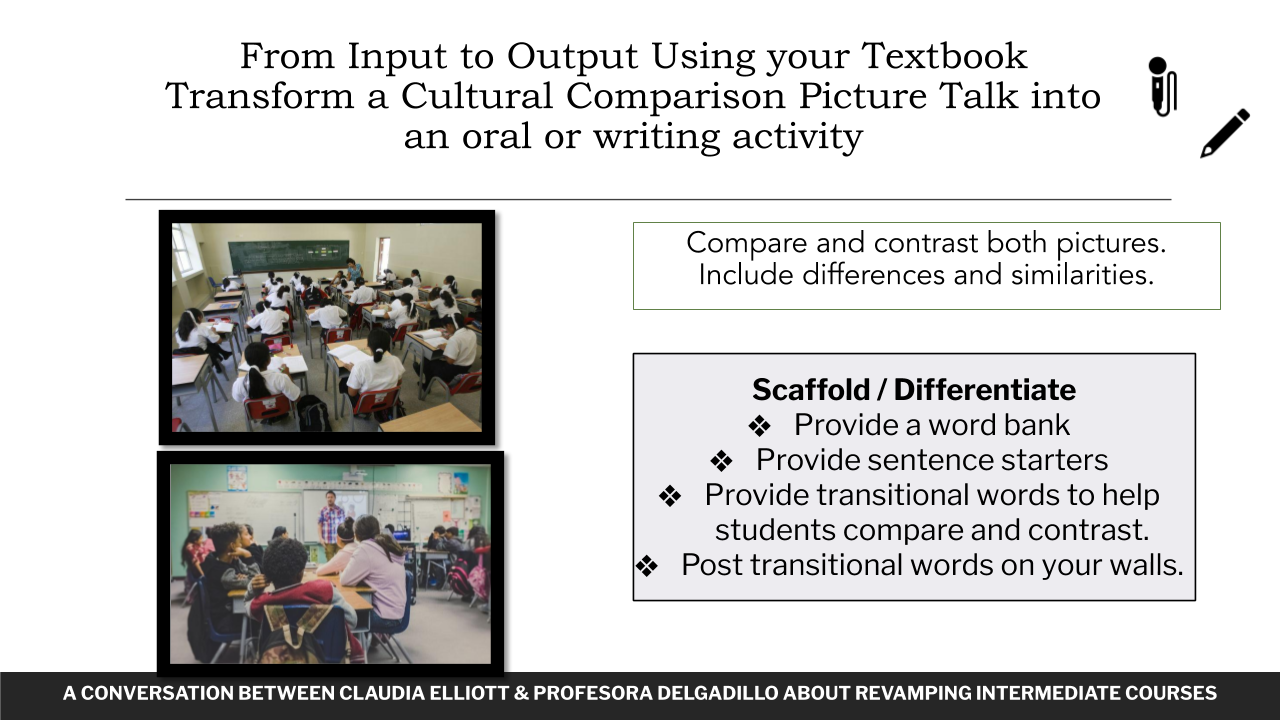
CHALLENGE #3 – TEXTBOOKS ARE COMMONLY NOT COMPREHENSIBLE AND THE DEMANDS OF THE CURRICULUM ARE OFTEN OVERLOADED
HOW WE OVERCAME THIS CHALLENGE – The short answer is that I had the liberty to stop using the textbook, so I did. However, if you must have a textbook because your administration or team requires it, there are ways in which you can still meet the needs of your students. If that is the case, here are some actions you can take:
- I first heard Kaitlin Leppert talk about conducting a textbook audit. Go through it and select which resources are current and compelling enough for you and your students. If you would like to know more about how to blend your textbook with CI, I suggest listening to Kaitlin’s podcast episode with Jodi Stokdyk.
- My friend Claudia Elliott has had to align her department’s textbook to fit her beautiful teaching style, she also suggested conducting a book audit, looking at the tasks inside the textbook, and selecting the ones that have a more real world application. Then, adjust your findings to meet the proficiency levels of your students inside your intermediate courses.
We couldn’t possibly cover all of the strategies needed to revamp intermediate level courses inside a one hour webinar or through a few blog posts. For that reason, my friend Claudia Elliott and I have invested many hours on a course to guide you through revamping your intermediate classes.
